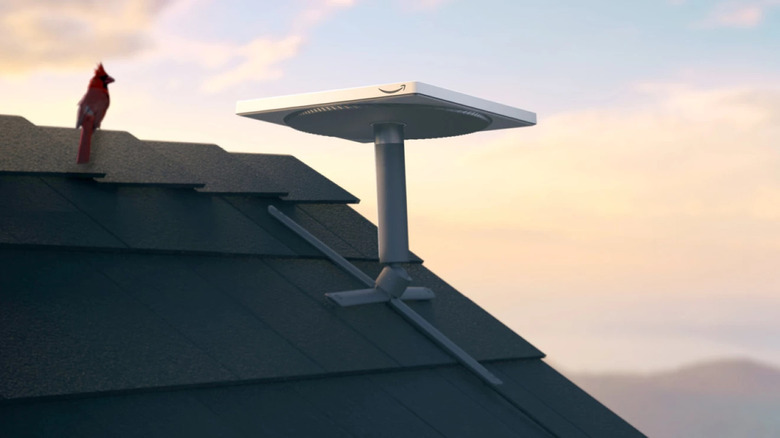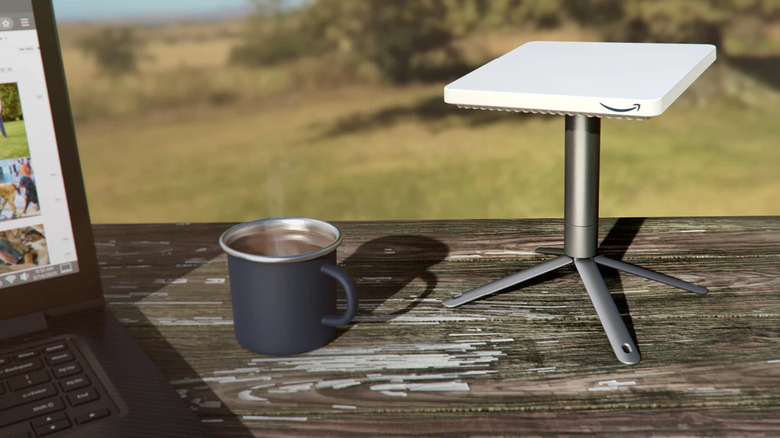Amazon Reveals Project Kuiper Satellite Internet Antennas To Undercut Starlink
While spotty broadband internet coverage isn't a dire circumstance for everyday life, living in a dead zone that no traditional service providers cover can be frustrating. In the Americas, rural areas are hit hardest by this issue, so the total population suffering through these deficiencies isn't debilitatingly overwhelming. That being said, it remains a common pain point the world over, and big tech companies have worked for years on new-age solutions to remedy it.
Satellite internet has emerged as the most common answer, and it has been served up in various forms over the years. In 2023, SpaceX's Starlink reigns supreme as the most notable consumer-oriented product, but just like the race its space-age Blue Origin subsidiary is engaged in, Amazon appears ready to lock horns.
Revealed nearly four years ago, Amazon is promising big things with Project Kuiper. Though the road to regulatory approval has been rocky, we could finally be close to a commercial launch. Our first look at the hardware today gives us a peek at the sleek units you can mount atop your house, or plant on any surface you need.
Last we heard, Amazon wanted to launch at least 3,200 Kuiper satellites to serve a global market, and we later learned it requested permission from the FCC to eventually add another 4,500. It'll need to cast a wide net if it hopes to best Starlink — which is available in more than two dozen countries to date.
Project Kuiper promises big speeds with a small footprint and price tag
Amazon revealed Tuesday that it has nailed down the hardware it'll offer would-be customers. The goal, Amazon says, was to land on something that's both cost-efficient and frictionless for consumer installs. It seems to have delivered on both, as the units apparently cost less than $500 to manufacture — and in lighter and smaller packages. For home consumers, the biggest unit's surface measures less than 11 square inches, and the terminal — sans mounting bracket — is just one inch thick.
Despite the size and cost, Amazon says this middle-tier Kuiper antenna is capable of handling speeds up to 400 megabits per second, which can't match the fastest landline broadband offerings by any measure, but it's plenty good for smaller, less active households.
When you have few other choices, anything is better than relying on cell towers, the throughput of which can struggle mightily in many of the markets Kuiper intends to serve. There is also a seven-inch terminal design that offers up to 100 megabits.
The biggest unit is reserved for enterprise customers. It measures 19-by-30 inches, and supports speeds up to one gigabit per second. Pending successful tests in partnership with United Launch Alliance, Amazon is targeting a late-2024 launch for Project Kuiper. Mass production is scheduled to begin inside its Kirkland, Washington fabrication facility at the onset of that year.

